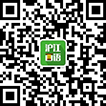The Hawthorne
effect is a form of reactivity whereby subjects improve an
aspect of their behavior being experimentally measured simply in response to the fact that they are being studied, not in response to any particular experimental
manipulation. The term was coined in 1955 by Henry A. Landsberger when analyzing older experiments from 1924-1932 at the Hawthorne Works (a Western Electric manufacturing facility outside Chicago).
Hawthorne Works had
commissioned a study to see if its workers would become more productive in higher or lower levels of light. The workers' productivity seemed to improve when changes were made and slumped when the study was concluded. It was suggested that the productivity gain was due to the motivational effect of the interest being shown in them. Although
illumination research of workplace lighting formed the basis of the Hawthorne effect, other changes such as maintaining clean work stations, clearing floors of obstacles, and even relocating workstations resulted in increased productivity for short periods. Thus the term is used to identify any type of short-lived increase in productivity.
相关中文(转自百度百科)
霍桑效应起源于1924年至1933年间的一系列实验研究,其后,从1927年到1932年,乔治·埃尔顿·梅奥(George Elton Mayo)教授持续多年对霍桑实验结果进行研究、分析。 霍桑一词源于用于实验的工厂,它是美国西部电气公司座落在芝加哥的一间工厂的名称。实验最开始研究的是工作条件与生产效率之间的关系,包括外部环境影响条件(如照明强度、湿度)以及心理影响因素(如休息间隔、团队压力、工作时间、管理者的领导力)。
“霍桑效应”在学校教育中极为普遍。有一所国外的学校,在入学的时候会对每个学生进行智力测验,以智力测验的结果将学生分为优秀班和普通班。结果有一次在例行检查时发现,一年之前入学的一批学生的测验结果由于某种失误被颠倒了,也就是说现在的优秀班其实是普通的孩子,而真正聪明的孩子却在普通班。但是这一年的课程成绩却如同往年一样,优秀班明显高于普通班,并未出现异常。原本普通的孩子被当作优等生关注,他们自己也就认为自己是优秀的,额外的关注加上心理暗示使得丑小鸭真的成了白天鹅。基于霍桑效应的心理暗示还可以治疗抑郁、自卑、紧张等各种心理疾病,霍桑效应在企业管理应用和领导行为上也卓有成效。
看到这样的解释,参加2010年考研英语一考试的同学们应该明白那段完形填空一下子讲工厂,一下子讲照明,一下子又讲经济是为什么了吧。


